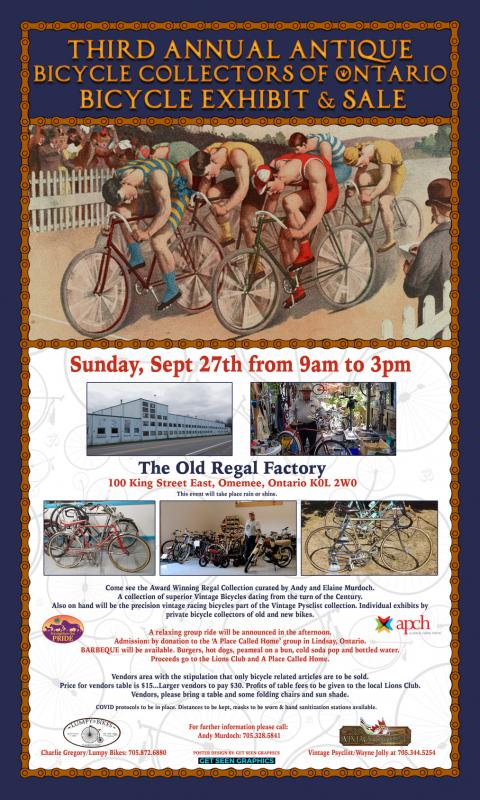CANADIAN VINTAGE BICYCLE SHOWS - SUMMER 2025
Posted: May 13, 2025
Canada Cycle & Motor Co. Ltd.
Posted: April 13, 2025
CANADIAN VINTAGE BICYCLE SHOW - SPRING 2025
Posted: January 23, 2025
SUMMER 2024
Posted: March 27, 2024
CANADIAN VINTAGE BICYCLE SHOWS - SUMMER 2023
Posted: April 11, 2023
Canadian Vintage Bicycle Show - Spring Event
Posted: February 04, 2023
Vintage Bicycle Season Is Upon Us
Posted: May 14, 2022
Please note - this event has been cancelled.
Posted: August 30, 2020
CANCELLED!!!

CANCELLED!!!
CCM VIM - More Money for the Bicycle Dealer
Posted: August 16, 2020
Working at CCM - 1938
Posted: April 01, 2020